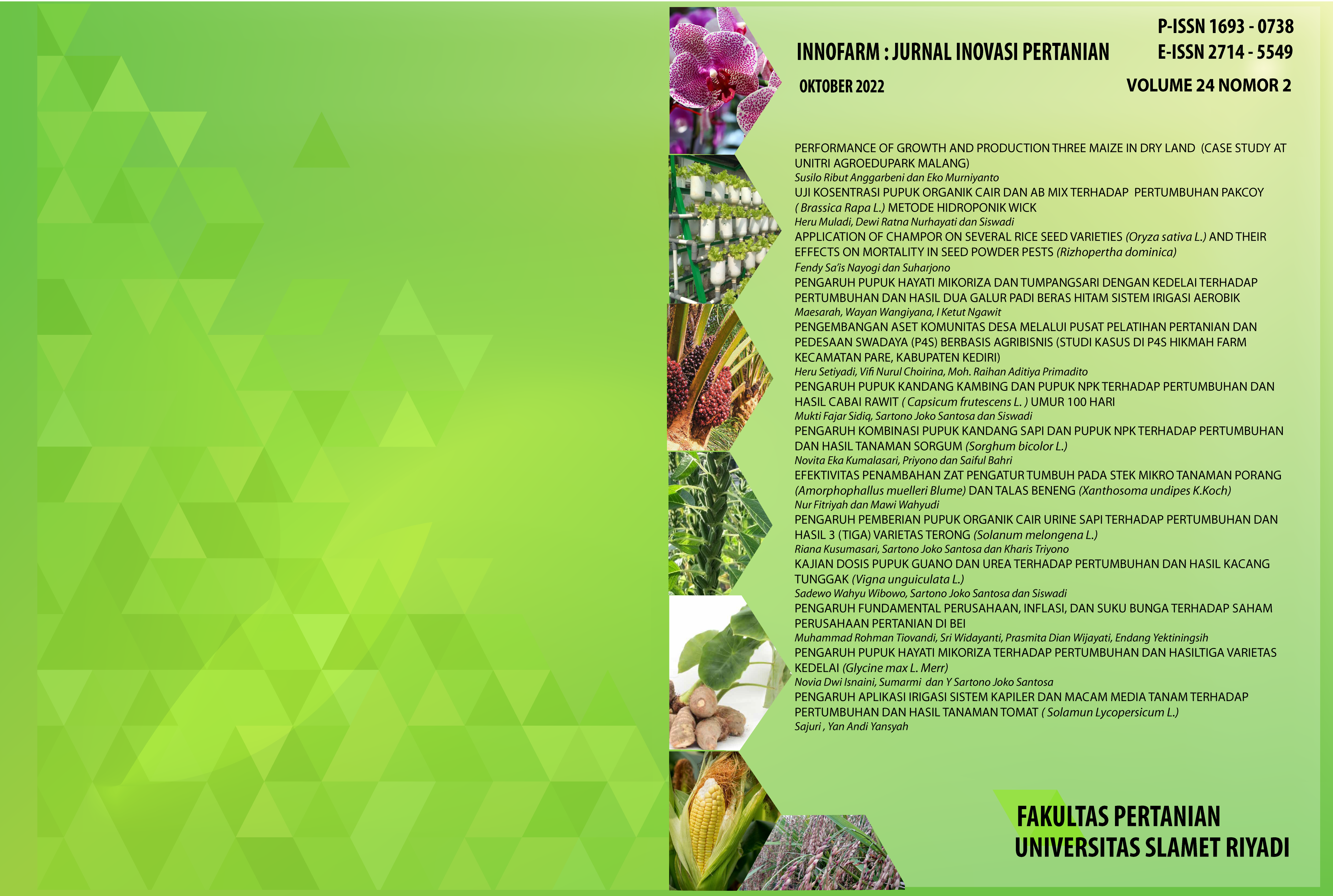Effect of Application of Liquid Organic Fertilizer Cattle Urine on Growth and Yield of 3 (three) Eggplant Varieties (Solanum melongena L.)
Keywords: Eggplant, POC, Varieties
DOI:
https://doi.org/10.33061/innofarm.v24i2.7749Abstract
The purpose of this study was to see if there was an effect of giving cow urine liquid organic fertilizer on the growth and yield of three varieties of eggplant (Solanum melongena L.). The activity will be held on December 14, 2021 until February 5, 2022 at the Research Garden and Land Collection, Faculty of Agriculture, Slamet Riyadi University, which is located on Jl. Jaya Wijaya No. 384, Kadipiro Village, Banjarsari District, Surakarta. Split plot design (RPT) or split plot design used in this study consisted of 2 factors and then replicated 3 times. The first factor is the variety (V) consisting of 3 levels including the Jelita variety (V1), Silila variety (V2) and the Teho variety (V3), the second factor is POC volume treatment with 4 levels, namely no volume (D0), volume 150 ml (D1), volume 300 ml (D2), volume 450 ml (D3). The data obtained were studied using Analysis of Variation (Anova) and then the Tukey test was carried out at the 5% level. After the research, liquid organic fertilizer of cow urine did not show a significant effect on the growth and yield of three eggplant varieties.
Downloads
Published
Issue
Section
License
Copyright (c) 2022 Riana

This work is licensed under a Creative Commons Attribution-NonCommercial 4.0 International License.
Authors who publish this journal agree to the following terms:
- Authors retain copyright and grant the journal right of first publication with the work simultaneously licensed under a Creative Commons Attribution License that allows others to share the work with an acknowledgement of the work's authorship and initial publication in this journal.
- Authors can separately make additional contractual arrangements for non-exclusive distribution published by the journal (e.g., publish it in a book), with an acknowledgement of its initial publication in this journal.
- Authors are allowed and encouraged to send their work via online (e.g., in the institutional repositories or their website) after published by the journal.


















